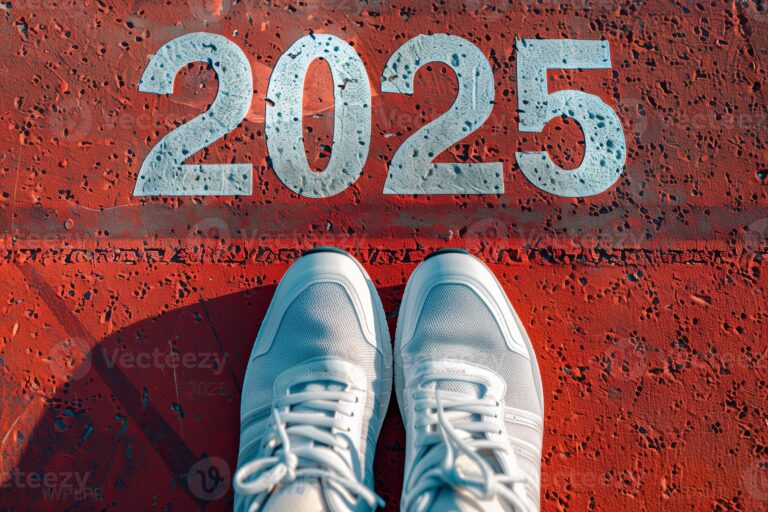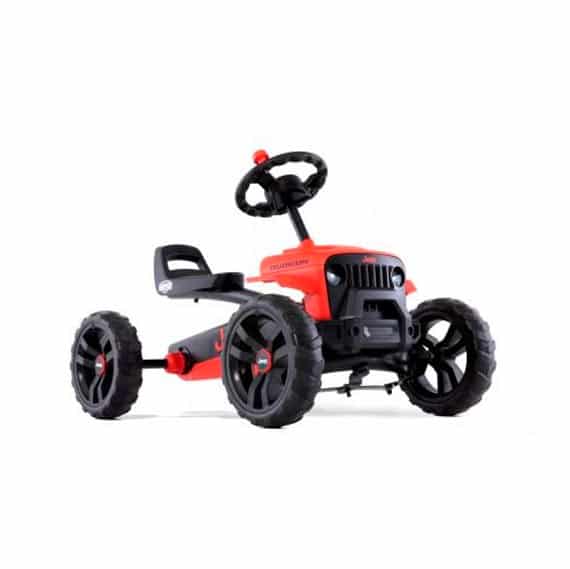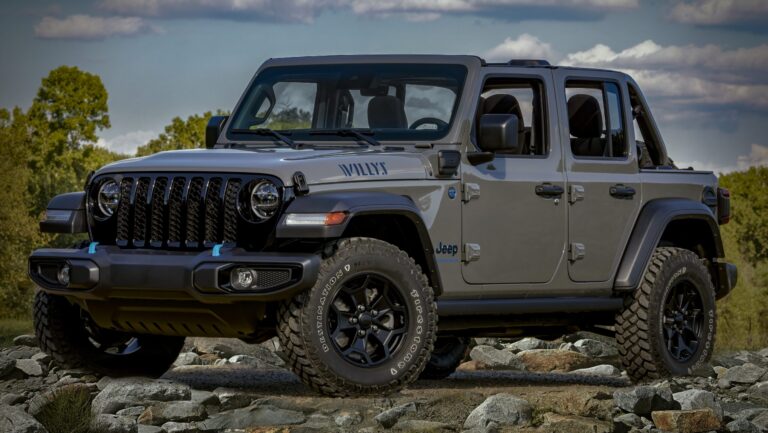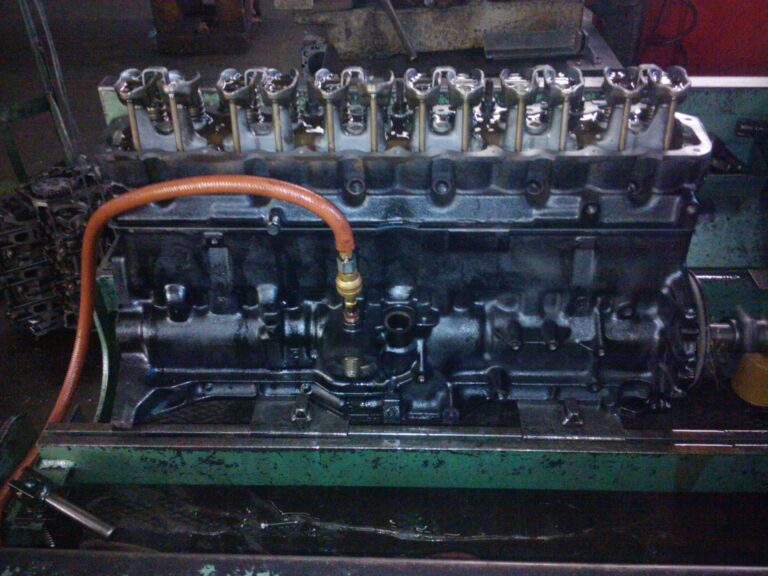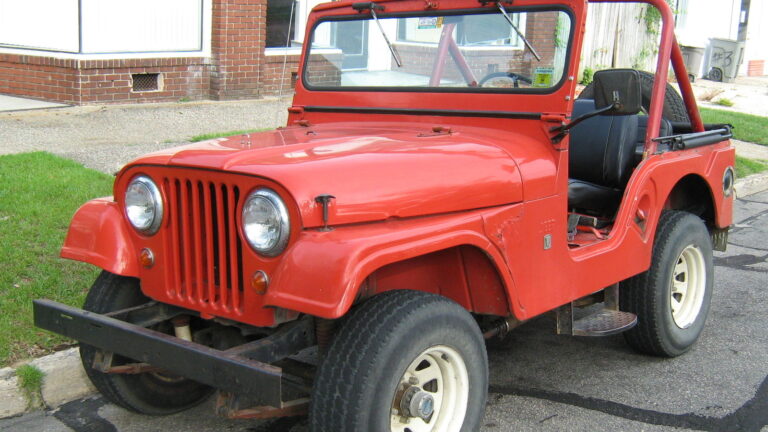Willys Jeep Chassis For Sale: The Foundation of an American Icon Reborn
Willys Jeep Chassis For Sale: The Foundation of an American Icon Reborn jeeps.truckstrend.com
The Willys Jeep. More than just a vehicle, it’s a symbol of rugged capability, wartime ingenuity, and an enduring spirit of adventure. For enthusiasts, restorers, and custom builders, the dream often begins not with a complete vehicle, but with its very backbone: the Willys Jeep chassis. This foundational frame, whether from a legendary WWII MB/GPW or a civilian CJ model, serves as the ultimate starting point for bringing an automotive legend back to life or forging a completely new creation.
Finding a Willys Jeep chassis for sale is more than just a transaction; it’s an investment in history, a commitment to craftsmanship, and the first critical step on a journey to automotive glory. It offers the unique opportunity to build a vehicle from the ground up, ensuring every component meets specific standards, whether for authentic restoration, extreme off-road performance, or a unique street rod. This article will serve as your comprehensive guide to understanding, finding, evaluating, and ultimately acquiring a Willys Jeep chassis for your next great project.
Willys Jeep Chassis For Sale: The Foundation of an American Icon Reborn
The Enduring Legacy of the Willys Chassis
The story of the Willys Jeep chassis begins in the crucible of World War II, with the Willys MB (and Ford GPW) serving as the quintessential military utility vehicle. Its simple, robust ladder frame design proved incredibly durable and adaptable, laying the groundwork for its civilian successors, the CJ (Civilian Jeep) series.
From the post-war CJ-2A, which helped farmers and families across America, to the more refined CJ-3A, the iconic flat-fendered CJ-3B, and the long-lived CJ-5, each generation retained the core ruggedness of its military ancestor. This consistent design philosophy means that while there are differences between models (wheelbase, mounting points, material gauges), the fundamental simplicity and strength of the Willys chassis endure.
Why is the chassis often the preferred starting point? Because it’s the least likely component to be significantly damaged beyond repair, yet it dictates the overall integrity and structure of the vehicle. A solid chassis provides a stable platform for a new drivetrain, suspension, and body, allowing for a truly bespoke build without the hidden compromises of an already assembled, potentially worn-out vehicle.
Why Buy a Willys Jeep Chassis? Unlocking Project Potential
The reasons for seeking out a Willys Jeep chassis are as diverse as the projects they inspire:
- Authentic Restoration Projects: For purists, finding a period-correct chassis is paramount to bringing a vintage Willys back to original specifications. Often, original chassis might be rusted beyond repair or twisted from years of abuse, necessitating a replacement that aligns with the vehicle’s historical integrity.
- Custom Builds and Hot Rods: The Willys chassis’s simplicity and robust nature make it an ideal foundation for custom builds. Whether you’re dreaming of a high-performance off-roader with modern axles and suspension, or a unique street rod with a powerful V8 engine, the bare chassis provides a clean slate for engineering your vision.
- Replacement for Damaged Frames: Many vintage Jeeps suffer from severe rust, accident damage, or fatigue cracks. A replacement chassis offers a more cost-effective and structurally sound solution than attempting extensive, often compromised, repairs on a severely deteriorated original.
- Historical Preservation: Acquiring and restoring a Willys chassis is a tangible way to contribute to the preservation of automotive history. Each restored chassis means another piece of this iconic legacy is saved for future generations.
- Cost-Effectiveness (Sometimes): While it might seem counterintuitive, sometimes purchasing a solid chassis and building up from there can be more economical than buying a complete, running vehicle that requires extensive, often hidden, repairs and modifications. It allows for a more controlled budget allocation and phased approach to the build.

What to Look For When Buying a Willys Chassis: A Critical Inspection Guide
Purchasing a Willys chassis is not like buying a set of tires. It requires meticulous inspection and a keen eye for detail. Here’s what to prioritize:

- Rust and Corrosion: This is the primary enemy. Pay close attention to:
- Frame Rails: Especially the bottom and inside surfaces where water and mud collect. Look for perforations, pitting, and delamination.
- Crossmembers: These are critical for structural rigidity. Check where they join the main rails and for any signs of sagging or bending.
- Spring Perches and Shackle Mounts: These areas bear significant load and are prone to rust and stress cracks.
- Body Mounts: Ensure they are intact and not heavily corroded, as this will affect body alignment.
- Straightness and Alignment: A twisted or bent chassis can lead to a host of problems, including poor handling, tire wear, and difficulty in mounting components. Look down the frame rails from both ends to check for obvious twists or bows. Measure diagonals (e.g., from front left spring perch to rear right) to ensure squareness. Signs of past accidents or severe off-road abuse often manifest as kinks or buckles.
- Cracks and Previous Repairs: Inspect all weld points, especially around stress areas like suspension mounts and crossmember junctions. Look for amateurish or incomplete welds, or evidence of repeated repairs in the same spot, which could indicate underlying issues.
- Completeness: A bare chassis is just that. However, some sellers might include components like axles, leaf springs, steering boxes, or even partial drivetrains. While these can add value, remember they will also likely need rebuilding. Verify what’s included versus what’s implied.
- Title and VIN (Vehicle Identification Number): This is absolutely crucial for legal registration, especially if you plan to build a road-legal vehicle.
- Original VIN Stamping: Willys chassis typically have the VIN stamped on the passenger-side frame rail, usually near the front spring shackle or just behind the engine mount. Ensure it’s legible and matches any title provided.
- Paperwork: A clear title, bill of sale, or proof of ownership is essential. Without proper documentation, you may face significant hurdles in registering your completed vehicle. In some states, a new VIN can be assigned to a custom-built vehicle, but the process is complex.
Where to Find Willys Jeep Chassis For Sale: Your Hunting Grounds
Locating the right Willys chassis requires patience and knowing where to look:
- Online Marketplaces:
- eBay: Often has a selection of bare frames, though shipping can be costly.
- Facebook Marketplace/Groups: Numerous Willys and vintage Jeep groups exist where chassis frequently pop up. These are great for local finds.
- Dedicated Forums: Websites like G503.com (for military Jeeps) and WillysTech.com, or specific CJ forums, often have "For Sale" sections frequented by serious enthusiasts.
- Specialized Classic Car Dealers/Salvage Yards: Some yards or dealers specialize in vintage Jeeps and might have bare chassis or donor vehicles. These often come with a higher price tag but potentially better condition or documentation.
- Swap Meets and Auctions: Large automotive swap meets (like Carlisle Events or Hershey) are excellent places to find parts, including frames. Auctions can also yield good finds, but require quick decision-making.
- Word of Mouth: Networking within the Willys and vintage Jeep community is invaluable. Let people know you’re looking; often, the best deals are found through connections.
The Renovation Process: From Chassis to Rolling Masterpiece
Once you’ve acquired your Willys chassis, the real work begins. This process transforms a raw frame into the sturdy foundation for your dream Jeep.
- Inspection and Assessment: Before anything else, conduct a thorough, detailed inspection. Use a wire brush to remove loose rust and dirt. Mark areas needing repair, reinforcement, or replacement.
- Stripping and Cleaning: The chassis should be completely stripped of any remaining components. Sandblasting is the most effective way to remove all rust, old paint, and grime, revealing the true condition of the metal. If sandblasting isn’t an option, heavy-duty wire wheels and chemical rust removers can be used.
- Repair and Reinforcement:
- Welding: Repair cracks, patch holes, and re-weld any weak or broken seams. Ensure all welding is done by a skilled professional if you lack the expertise.
- Straightening: If the chassis is bent or twisted, it may require professional frame straightening using specialized equipment.
- Gusseting/Reinforcement: For off-road builds or those with powerful engines, consider adding gussets to high-stress areas like spring perches, shock mounts, and steering box mounts for added strength.
- Rust Prevention and Coating: This is a critical step for longevity.
- Primer: Apply an epoxy primer directly to the bare metal for maximum adhesion and rust inhibition.
- Paint/Undercoating: Follow with a durable topcoat. Many opt for chassis paint, truck bed liner, or specialized undercoatings for superior protection against rust, chips, and abrasion.
- Suspension and Axle Installation: Begin assembling the rolling chassis. Install new or rebuilt leaf springs, shackles, shock absorbers, and steering components. Mount the axles, ensuring proper alignment.
- Powertrain Mounting (Optional): If you’re planning an engine swap, now is the time to fabricate or install engine and transmission mounts.
- Body Mounting: Once the chassis is solid and protected, the body tub and fenders can be carefully mounted, using new body mounts and hardware.
- Legal Considerations: Throughout the build, keep meticulous records and receipts. If building a new vehicle from a bare chassis, consult your local Department of Motor Vehicles (DMV) or equivalent agency regarding custom vehicle registration, VIN verification, and inspection requirements.
Challenges and Solutions in the Chassis Hunt
- Finding the "Right" Chassis: Patience is key. The ideal chassis (rust-free, straight, with paperwork) is rare and commands a premium. Be prepared to travel or pay for shipping.
- Solution: Network widely, set up alerts on online platforms, and be willing to compromise on some aspects if the core structure is sound.
- Hidden Damage: Rust can be insidious, and prior repairs might hide deeper issues.
- Solution: Always inspect in person if possible. Bring a magnet to detect body filler, a hammer to tap for sound metal, and a flashlight for dark corners. If unsure, consult a professional fabricator or restorer.
- Shipping and Transport: A bare chassis is bulky and heavy.
- Solution: Factor in freight shipping costs or arrange for personal pickup with a suitable trailer. Get multiple quotes.
- Legal Hurdles (Titling): Missing or questionable VINs/titles can derail a project.
- Solution: Prioritize chassis with clear titles. Research your state’s laws regarding "assembled" or "custom-built" vehicle registration before purchase.
- Budget Overruns: Restoration and custom building rarely stick to the initial budget.
- Solution: Build in a contingency fund (20-30% of your estimated cost) for unexpected repairs or parts.
Willys Jeep Chassis For Sale: Estimated Price Guide
Please note: These are estimated price ranges and can vary significantly based on location, seller, specific model (MB, CJ-2A, CJ-3A, CJ-3B, CJ-5), completeness (bare frame vs. with axles/suspension), and current market demand. A rare, perfectly preserved military chassis will command a higher price than a common civilian one needing extensive work.
| Chassis Type | Condition Category | Estimated Price Range (USD) | Notes |
|---|---|---|---|
| Willys MB / Ford GPW (WWII Military) | Poor/Salvage | $500 – $1,500 | Heavily rusted, bent, or missing sections. Only good for patterns or very experienced fabricators. Often no VIN. |
| Fair/Restorable | $1,500 – $3,500 | Significant surface rust, some minor perforations, possibly slight bending. Requires sandblasting and substantial repair. May or may not have a legible VIN. | |
| Good/Solid | $3,500 – $6,000 | Minimal rust, mostly straight. Needs cleaning, minor repairs, and paint. Legible VIN often present. | |
| Excellent/Restored | $6,000 – $10,000+ | Professionally restored, sandblasted, painted, straight. Ready for components. Clear VIN and documentation. Rare. | |
| Willys CJ-2A / CJ-3A (Early Civilian) | Poor/Salvage | $400 – $1,000 | Similar to military, but civilian models are generally more common, hence slightly lower entry point. |
| Fair/Restorable | $1,000 – $2,500 | Typical project chassis. Will need substantial cleaning, rust repair, and possibly straightening. | |
| Good/Solid | $2,500 – $4,500 | Solid foundation for restoration. Minor surface rust, mostly straight. | |
| Excellent/Restored | $4,500 – $8,000+ | Fully prepped, painted, and ready for assembly. Less common at this price for CJ-2A/3A unless it’s a very complete "rolling chassis." | |
| Willys CJ-3B / CJ-5 (Later Civilian) | Poor/Salvage | $300 – $800 | More common, so very low-end pricing for severely damaged frames. |
| Fair/Restorable | $800 – $2,000 | Often found with surface rust, some minor structural issues. Good for a budget build. | |
| Good/Solid | $2,000 – $3,500 | Good candidate for a general restoration or custom build. | |
| Excellent/Restored | $3,500 – $6,000+ | Less frequent to find fully restored bare chassis for these models unless part of a larger project sale. |
Note: Prices can be higher if the chassis comes with original axles, springs, or other desirable components, even if they need rebuilding. Always factor in shipping costs, which can range from a few hundred to over a thousand dollars depending on distance.
Frequently Asked Questions (FAQ) about Willys Jeep Chassis For Sale
Q1: Do Willys chassis always come with a VIN?
A1: Original Willys MB and CJ chassis were stamped with VINs, typically on the passenger-side frame rail. However, due to age, rust, or previous repairs, these stampings may be illegible or absent. Always verify if a VIN is present and if it matches any provided documentation.
Q2: Can I register a vehicle built on a bare chassis?
A2: Yes, but the process varies significantly by state or country. Some jurisdictions treat it as a "custom-built" or "assembled" vehicle, requiring a new VIN assignment and specific inspections. Others may allow re-registering under the original chassis VIN if it’s verifiable. Always check with your local DMV/motor vehicle authority before starting your project.
Q3: Are all Willys chassis the same?
A3: No. While they share a similar ladder frame design, there are crucial differences. Military MB/GPW chassis are shorter and narrower than later CJ models (especially CJ-5). Mounting points for engines, transmissions, transfer cases, and body tubs also vary between models (e.g., flat-fender CJ-2A vs. round-fender CJ-5). Ensure the chassis you buy is compatible with your intended body and drivetrain.
Q4: How much does it cost to restore a Willys chassis?
A4: This varies widely. If you do most of the work yourself (sandblasting, welding, painting), costs might be a few hundred to a couple of thousand dollars for materials and specialized tools. If you outsource sandblasting, frame straightening, and professional welding/painting, it can quickly add up to several thousand dollars ($3,000 – $7,000+), not including the initial purchase price of the chassis.
Q5: What tools do I need for chassis work?
A5: Basic tools include grinders, wire wheels, wrenches, sockets, and safety gear. For serious rust repair and reinforcement, you’ll need a welder (MIG is common), an air compressor for sandblasting (or professional service), jack stands, and a level working area. A measuring tape and a straight edge are essential for checking alignment.
Q6: Is it better to buy a complete Jeep or just a chassis for a restoration project?
A6: It depends on your goals, budget, and skill level.
- Complete Jeep: Offers more original parts, potentially a running engine, and existing registration. However, it might hide extensive rust or mechanical issues, and you’ll pay for parts you don’t need or plan to replace.
- Bare Chassis: Provides a clean slate, allowing you to control every aspect of the build and ensure structural integrity. It often requires more initial investment in components (axles, suspension, drivetrain, body) but can lead to a higher-quality, more tailored final product. For a full restoration, starting with a solid chassis is often the most sensible approach.
Conclusion: The Journey Begins with the Frame
The Willys Jeep chassis is more than just a piece of metal; it’s the very soul of an automotive legend. For those dedicated to preserving history or crafting a bespoke vehicle, finding the right chassis is the pivotal first step. It demands careful consideration, meticulous inspection, and a clear vision for the finished product.
While the journey from a bare frame to a roaring Willys Jeep is challenging, it is immensely rewarding. The satisfaction of building a vehicle from its foundational components, knowing every bolt and weld, creates a bond unique to the custom builder or dedicated restorer. Whether your aim is a museum-quality restoration, a capable off-road beast, or a unique street cruiser, the Willys Jeep chassis offers an unparalleled starting point for an adventure that extends far beyond the garage. Embrace the challenge, enjoy the process, and soon you’ll be driving a piece of American history, built with your own hands.


